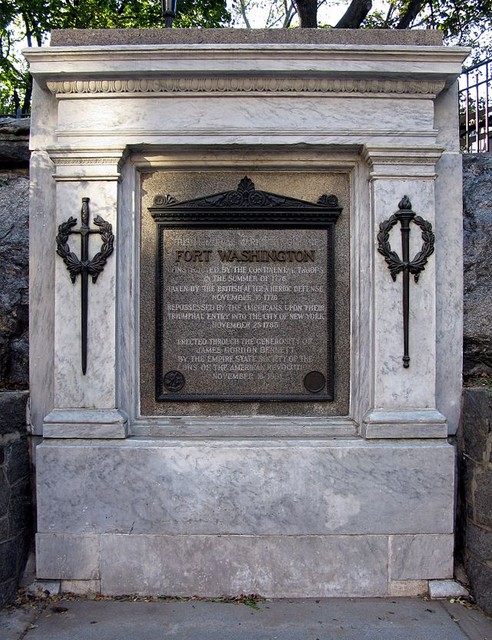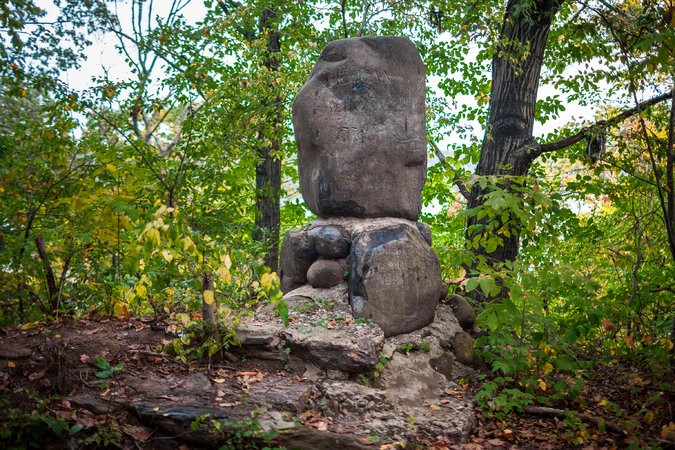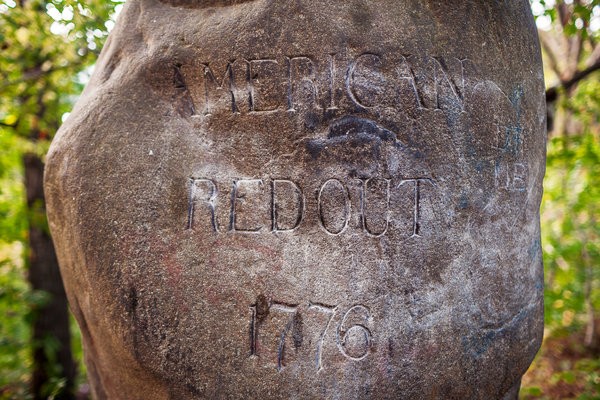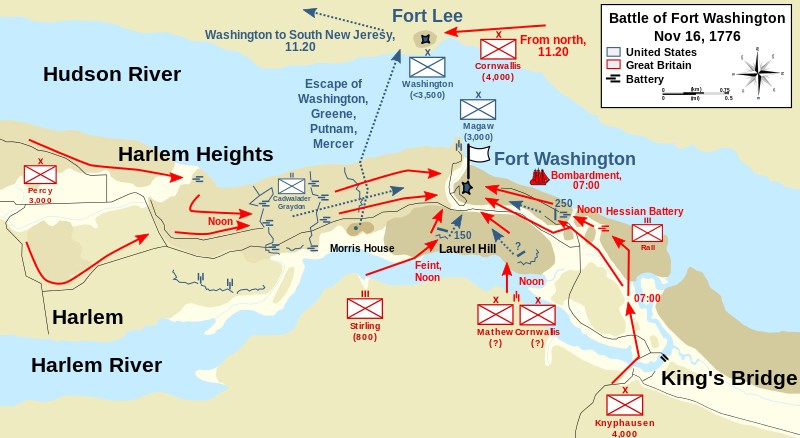Battle of Fort Washington
Introduction
Text-to-speech Audio
Images
Tablet commemorating the location of Fort Washington

Stone marker of the redoubt located near Fort Washington

Close-up of the stone marker

Battle of Fort Washington battle map

Backstory and Context
Text-to-speech Audio
Fort Washington was built in 1776 to prevent the British from going up the Hudson River. The fort also had many batteries to help defend it from British attack. Using the fort and its defenses, the Americans were able to hold off many counter attacks from the British, which led to Colonel Robert Magaw, the commander of the fort, being overconfident in the fort's defensive capabilities. He boasted that the fort could withhold a siege to the end of December. But little did he know that he would have a defector on his hands. William Demont defected from the fort to the British on November 2nd, and gave up all the details on the fort to Brigadier General Hugh Percy, who passed the information on to General William Howe, who had defeated General George Washington only a few days earlier in the Battle of White Plains.
Washington had actually considered abandoning the fort, but Nathaniel Greene persuaded him that the fort could be defended and that it was in fact vital to do so, as the fort helped keep communications across the Hudson open and it helped dissuade the British from trying to take New Jersey. The argument eventually persuaded Washington to not give up the fort. But they didn't know that Howe was planning an attack on the fort. The plan was to attack the force from 3 sides, while a seperate 4th force feigned an attack. But before the attack commended, Howe sent out a British officer to the fort under a flag of truce to deliver a message that if the fort did not surrender, everyone in the fort would be killed. Magdaw refused to surrender the fort and said that the Americans would fight until the last man.
The British and Hessian troops began moving towards the fort before dawn on November 16th. At 7 A.M., Hessian troops began firing upon the American battery on Laurel Hill, and the British Frigate Pearl began firing on the American entrenchments surrounding the fort, while Percy and his artillery began firing on the fort itself. The Americans responded by shelling the British and Hessian troops who had been ferried across the river, as Percy began to march his troops numbering in the thousands, trying to get the American forces to retreat into the fort. The nearby hills served to the Americans' advantage, as the British had to trek up the steep slopes, but the British forces soon proved to be too much for the Americans, who eventually fully retreated into the fort while Washington and other important officials like Green, Isaiah Putnam and Hugh Mercer retreated to nearby Fort Lee.
It took the British and Hessian forces no time to silence the battery in Fort Washington and taking the American redoubt at the top of the hill, and they began to slowly surround the fort. The British once again sent an officer under a flag of truce to request that the Americans surrender the fort, giving Magdaw a half hour to decide. Magdaw made the decision to surrender the fort at 3:00 PM and by 4:00 PM the British flag was flying above Fort Washington.
By the end of the battle, the British and Hessians had 84 soldiers killed and 374 wounded, while the Americans suffered 59 casualties, and 96 wounded while a staggering 2,838 soldiers were captured as prisoners of war. Only 800 of those captured would survive long enough to be freed. The Americans soon abandoned Fort Lee, 3 days after the battle and Washington and his forces were chases as far as Brunswick, New Jersey by British forces. But a month later, Washington made his now-famous crossing of the Delaware River, defeating the Hessian garrison at Trenton.
The site of Fort Washington lies in Bennett Park, where the location of its walls are demarcated by stones.
